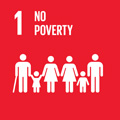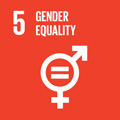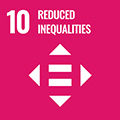- Docente: Maria-Gabriella Baldarelli
- Credits: 8
- SSD: SECS-P/07
- Language: Italian
- Teaching Mode: Traditional lectures
- Campus: Rimini
- Corso: First cycle degree programme (L) in Economics of Tourism (cod. 8847)
Learning outcomes
At the end of the course student will be able to manage financial accounting of the enterprise and in tourist entities.
The student will be able to use double entry accounting method to record the main enterprises operations
Course contents
Part I (Sept.- Oct.)
1-Purpose and scope of the discipline. Companies and the business
system.
2 - The tourism industry and tourism companies and tourism
companies in the "network". The circuits operating tourism
businesses
3 - The system of corporate values. The accounting system and
its various significati.I systems and accounting methods.
4 - The income and the chart of accounts.
5 - The double entry method applied to the system of capital and
results of operations.
6 - Types of capital and the dynamics of the capital.
Bibliography:
Part II (Nov.- Dec)
7 - The types of income and the dynamics of income.
8 - The analysis and the accounting of business
transactions.
9 - The analysis and the accounting of business transactions
relating to tourism businesses.
10 - The financial statements: an outline.
Bibliography:
Baldarelli Maria-Gabriella, Davide Pigiani,Introduzione alla Ragioneria per le aziende turistiche con esercitazioni svolte, Rimini, Maggioli, 2019(in corso di stampa)
L.Marchi( a cura di), Contabilità d'impresa e valori di bilancio, Giappichelli, Torino, 20108
Teaching notes(on-line)
Marco Tieghi e Sabrina Gigli, Introduzione alla contabilità e al bilancio d'esercizio, Il Mulino, Bologna, 2007.
Propedeuc course and Integration with exercices along with a
tutor of the course
Readings/Bibliography
Text:
Baldarelli Maria-Gabriella, Davide Pigiani,Introduzione alla Ragioneria per le aziende turistiche con esercitazioni svolte, Rimini, Maggioli, 2019(in corso di stampa)
L.Marchi( a cura di), Contabilità d'impresa e valori di bilancio, IV ed., Giappichelli, Torino, 2010.
Teaching notes for students (on-line)
Marco Tieghi e Sabrina Gigli, Introduzione alla
contabilità e al bilancio d'esercizio, Il Mulino, Bologna,
2007.
English text:
R.G. Shroeder, M.W.Clark and J.M., Cathey, Financial accounting. Theory and analysis. text and cases, 9th edition, Wiley, 2006.
Others issues for students
Teaching methods
Lectures, exercices, seminars
Assessment methods
The exam is aimed at evaluating the skills and the critical abilities developed by the students as regards to financial accounting in tourism
The exam is composed of a mid-term- First part written test (50% of the final mark), and a second part written test (50% of the final mark). It is not possible to bring books, personal notes or electronic devices in the exam. Registration for the exam is compulsory, and students have to register through AlmaEsami according to the general rules of the School of Economics, Management and Statistics.
The mid-term assessment for Part I (48% of the final mark)-written exam, is scheduled at the end of the first term (November 2014), it is 45' long and is composed in 1 or 2 open questions and 5/8 exercises about tourist enterprises( tour operators), Sales and purchases financial accounting registrations.
The mid-term assessment for Part II (48% of the final mark)
written exam, is scheduled at the end of the second term
(January 2016), it is one-hour long and is composed of 1 or
2 open questions and 5/8 exercises about constitution of the
company, funding and other financial accounting registration. Only
students who pass the first mid-term assessment are admitted to the
second mid-term assessment.
The mark is out of 30 points, and the minimum required to pass the
exam is 18 / 30.
Final exam: Written exam and colloquium
Teaching tools
Frontal lessons, exercices, case study , workshops
Links to further information
Office hours
See the website of Maria-Gabriella Baldarelli
SDGs




This teaching activity contributes to the achievement of the Sustainable Development Goals of the UN 2030 Agenda.
